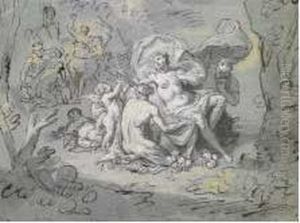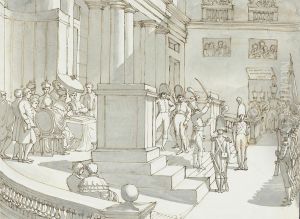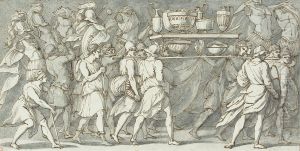Francesco Baratta Paintings
Francesco Baratta was an Italian sculptor of the Baroque period, born in 1590 in Massa di Carrara, a town renowned for its marble quarries in the Tuscany region of Italy. He was an important figure in the world of Baroque sculpture, working primarily in Rome and contributing significantly to the artistic landscape of the 17th century. Baratta's career was marked by his mastery of marble, a medium he manipulated with remarkable skill to produce works of deep emotional intensity and exquisite beauty.
Baratta received his early training in the studio of Gian Lorenzo Bernini, the leading sculptor of his time. Under Bernini's guidance, Baratta honed his skills and developed a keen understanding of dynamic compositions and the play of light and shadow, which would become characteristic elements of his work. Despite the influence of his mentor, Baratta established his own artistic identity, focusing on themes of religious devotion and mythological narratives with a particular emphasis on the grace and elegance of the human form.
Throughout his career, Francesco Baratta completed numerous commissions for churches, private patrons, and the Papal court in Rome. Among his most celebrated works are the marble statues of Saint Catherine of Alexandria for the Church of Santa Caterina a Magnanapoli in Rome and the allegorical figure of Charity for the Chigi Chapel in the Church of Santa Maria del Popolo. His style is noted for its virtuosity in carving, achieving textures and details that suggest the softness of flesh and the delicacy of fabrics, which was a remarkable achievement in marble.
Baratta's legacy is not as widely recognized as that of his contemporaries like Bernini or Borromini, partly because many of his works remain in situ and have not been as accessible to the broader public. However, his contributions to Baroque art have been increasingly appreciated by art historians and scholars, who recognize his ability to infuse marble with a sense of liveliness and emotional depth that speaks to the viewer across the centuries.
Francesco Baratta passed away in 1666 in Rome, leaving behind a body of work that continues to be admired for its technical brilliance and artistic expression. His sculptures are a testament to the Baroque era's fascination with movement, emotion, and the exploration of the human condition, making him a significant figure in the history of Italian art.



